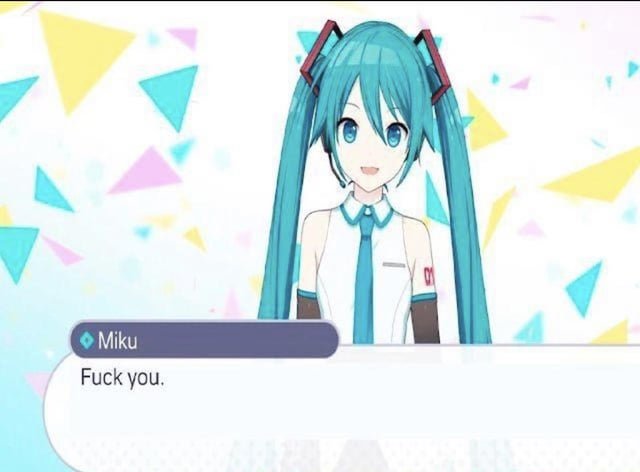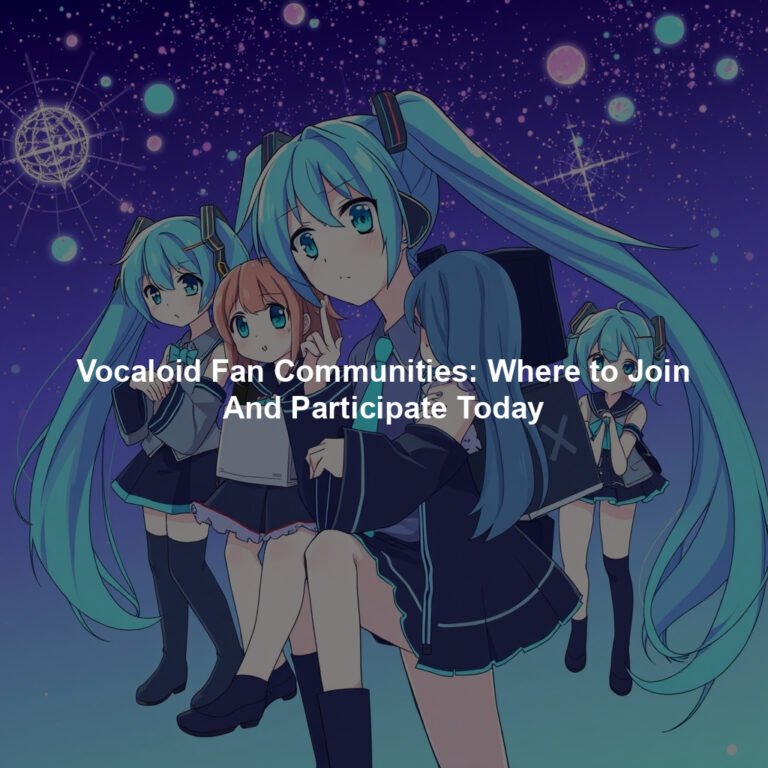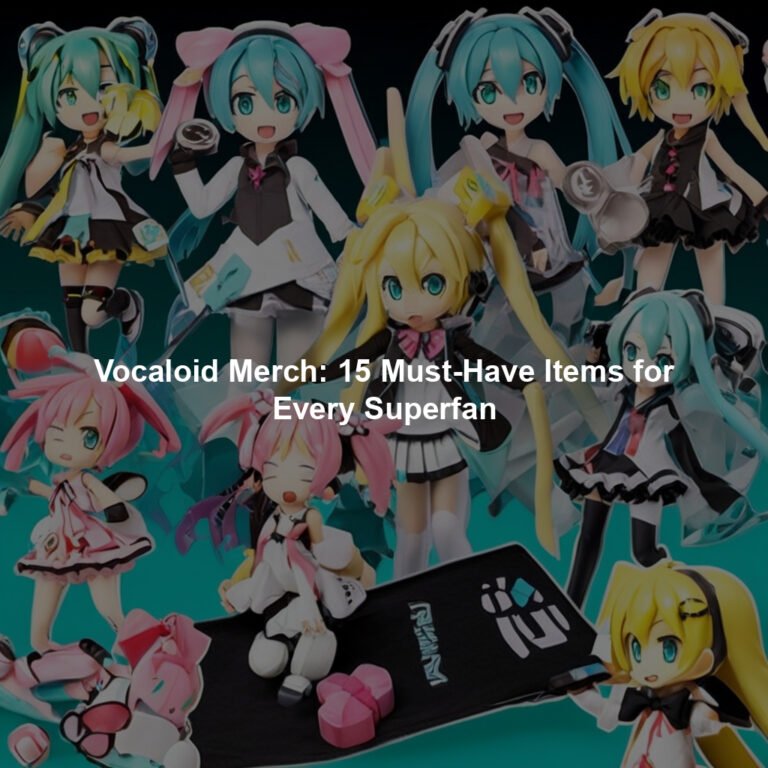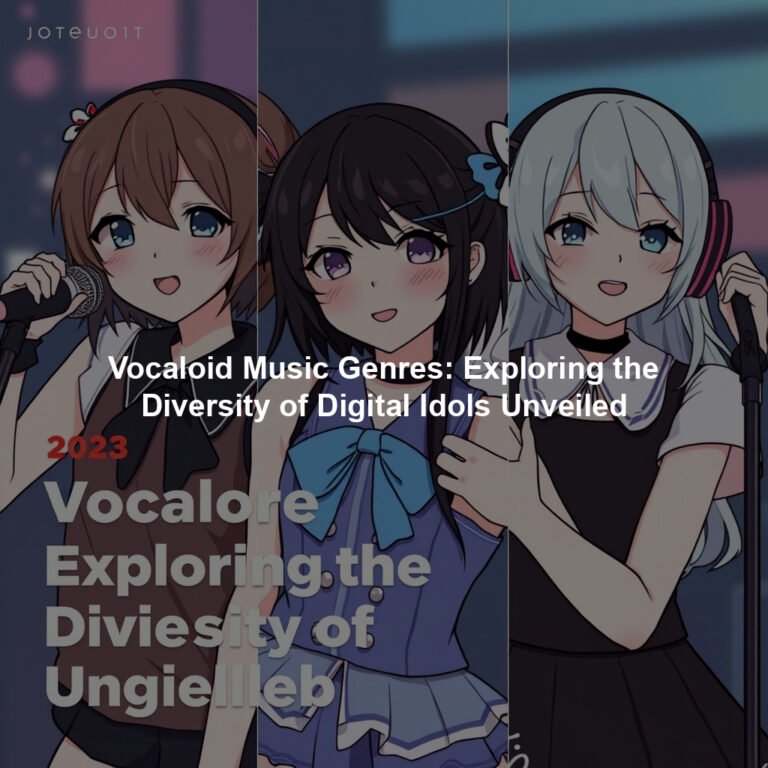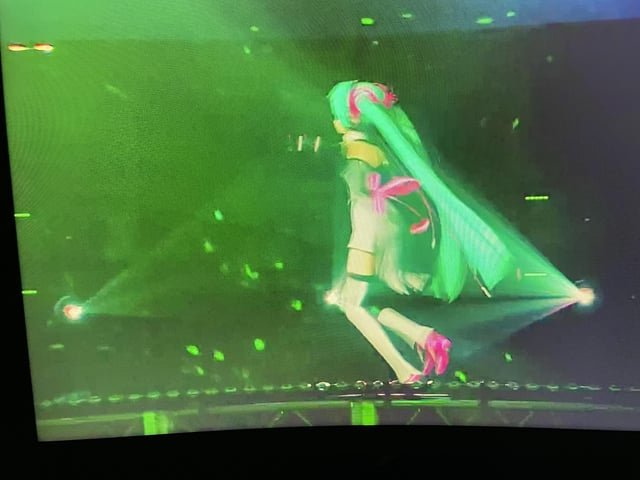Vocaloid songs captivate fans worldwide with their unique voices and catchy melodies. But did you know these songs hide deep secrets and theories?
Many fans believe that Vocaloid songs tell hidden stories. These theories add layers of meaning, making the songs even more interesting. Some theories connect songs to historical events. Others suggest dark or mysterious plots. These ideas spark endless discussions among listeners.
If you love Vocaloid music, exploring these fan theories can offer a new perspective. Dive into the world of Vocaloid and discover secrets you never knew existed.
Hidden Messages In Vocaloid Lyrics
Vocaloid songs have fascinated fans worldwide. Many believe these songs hide secret messages. Let’s explore some of these hidden messages.
Cryptic Symbols
Many Vocaloid songs use cryptic symbols in their lyrics. These symbols can have deeper meanings. Fans often decode these symbols to uncover hidden stories.
For example, the song “Rolling Girl” by Wowaka contains many such symbols. The repeated phrase “just keep rolling” might seem simple. But some fans think it represents the struggle with mental health. The rolling symbolizes a continuous fight.
| Song Title | Symbol | Possible Meaning |
|---|---|---|
| Rolling Girl | Rolling | Mental Struggle |
| World is Mine | Crown | Desire for Control |
Interpreting Hidden Meanings
Interpreting hidden meanings in Vocaloid songs is both an art and a science. Fans use context and lyrics to find these meanings. Take the song “World is Mine” by Ryo. It seems like a simple love song. But, some believe it shows a deeper desire for control and recognition.
Another example is “The Disappearance of Hatsune Miku.” The lyrics talk about Miku’s fading existence. Some fans think this represents the fear of becoming forgotten. The song speaks to our deep fears and insecurities.
- Rolling Girl: Mental health struggles
- World is Mine: Desire for control
- The Disappearance of Hatsune Miku: Fear of oblivion
These interpretations make Vocaloid songs more engaging. They add layers of meaning that resonate with fans. This connection is one reason these songs are so popular.
Character Connections
Many Vocaloid songs feature unique characters with complex backstories. Fans often create theories about how these characters are connected. These theories add depth and intrigue to the music, making the listening experience richer and more engaging.
Linking Vocaloid Personalities
Fans have discovered links between different Vocaloid characters. For example, some believe that Hatsune Miku and Kagamine Rin are sisters. This theory is based on their similar appearances and shared themes in their songs.
Another popular theory suggests that KAITO and MEIKO have a romantic connection. Their duets often feature emotional lyrics that hint at a deeper relationship.
Theories On Relationships
Some fans theorize that Luka Megurine and GUMI are rivals. This idea stems from their contrasting musical styles and frequent competition in fan polls.
There are also theories about Vocaloid characters being reincarnations of each other. For instance, some believe that Kagamine Len is a reincarnation of a character from a different song.
| Character | Theory |
|---|---|
| Hatsune Miku | Sister of Kagamine Rin |
| KAITO | Romantic connection with MEIKO |
| Luka Megurine | Rival of GUMI |
| Kagamine Len | Reincarnation theory |
Time Travel And Alternate Realities
Vocaloid songs have always fascinated fans with their unique storytelling. Some songs dive into complex themes like time travel and alternate realities. These theories add layers of intrigue and mystery. Let's explore some of these captivating fan theories.
Songs Hinting At Time Loops
Many Vocaloid songs hint at the concept of time loops. In these songs, characters find themselves trapped in repeating cycles. One popular example is “Rolling Girl” by Wowaka. The song's lyrics suggest the protagonist is stuck in a loop of despair.
Another song that fans believe involves time loops is “Kagerou Daze” by Jin. The lyrics describe a never-ending summer day. Fans theorize the characters relive this day over and over.
Parallel Universes In Lyrics
Some Vocaloid songs explore the idea of parallel universes. “The Lost One's Weeping” by Neru is an example. The song's lyrics mention different realities where the protagonist's choices lead to alternate lives.
Another song, “Outer Science” by Jin, suggests a world where different events occur. Fans believe the song's protagonist travels between these parallel universes.
| Song Title | Artist | Theme |
|---|---|---|
| Rolling Girl | Wowaka | Time Loops |
| Kagerou Daze | Jin | Time Loops |
| The Lost One's Weeping | Neru | Parallel Universes |
| Outer Science | Jin | Parallel Universes |
These theories enrich the listening experience. They add depth to the already captivating world of Vocaloid music. Do you have a favorite theory? Share it with us in the comments!

Credit: www.reddit.com
Real-world References
Many Vocaloid songs contain hidden references to real-world events and pop culture. These references can add depth and intrigue to the stories told through the music. Fans love to uncover these hidden meanings. Let’s explore some fascinating theories about the real-world references in popular Vocaloid songs.
Historical Events
Some Vocaloid songs seem to draw inspiration from historical events. “Senbonzakura,” for example, references the Meiji Restoration in Japan. This period was a time of great change. The song's imagery and lyrics reflect the clash between tradition and modernization. Another song, “The Daughter of Evil,” is thought to mirror the French Revolution. It depicts a tyrannical ruler facing rebellion. The detailed storytelling aligns with historical accounts.
Pop Culture Influences
Vocaloid songs often include nods to popular culture. “Matryoshka” by Hachi is one such song. Many believe it references the famous Russian nesting dolls. The song's chaotic and colorful style mirrors the complex layers of the dolls. Additionally, “Romeo and Cinderella” by doriko draws from Shakespeare's “Romeo and Juliet.” It tells a tragic love story with a modern twist. Fans appreciate these connections to familiar stories.
Dark Themes And Symbolism
Many Vocaloid songs carry a deeper meaning. They often explore dark themes and hidden symbolism. These songs tell stories that can be both haunting and thought-provoking. Fans have created numerous theories about the morbid imagery and psychological interpretations found in these songs.
Exploring Morbid Imagery
Vocaloid songs sometimes depict grim scenes and unsettling imagery. For instance, the song “Rolling Girl” by Hatsune Miku deals with themes of despair and mental anguish. The lyrics talk about a girl trapped in a cycle of self-harm and depression. These visuals are not just for shock value. They reflect real-life struggles many people face.
Another example is the song “The Disappearance of Hatsune Miku”. It narrates a digital entity facing erasure and identity crisis. The imagery here can be seen as a metaphor for existential dread and the fear of being forgotten.
Psychological Interpretations
Many fans believe these songs delve into the human psyche. For example, the song “Matryoshka” by GUMI and Hatsune Miku is filled with abstract lyrics. Fans interpret it as a representation of mental instability and inner chaos.
In “Lost One’s Weeping” by Kagamine Rin, the song addresses the pressures of society and academic stress. The lyrics speak to the emotional turmoil and loss of self many students experience. These psychological themes resonate deeply with listeners.
Furthermore, the song “Servant of Evil” by Kagamine Len tells a tragic story of sacrifice and unrequited love. The psychological depth in the characters’ actions and motivations adds layers to the song’s narrative.

Credit: www.reddit.com
Fan-made Continuities
Vocaloid songs often tell unique stories through their captivating lyrics and melodies. Fans, with their imaginative minds, have created fan-made continuities that link various songs together. These continuities form exciting story arcs and collaborative theories that bring new life to the music.
Story Arcs Across Songs
Some Vocaloid songs share themes, characters, or events. Fans notice these connections and create story arcs. For example, songs by the producer DECO27 often explore themes of love and heartbreak. Fans link these songs into a continuous narrative. Each song becomes a chapter in an ongoing story.
Another popular story arc involves the Evillious Chronicles by Mothy. This series spans multiple songs and albums. It tells a dark tale of sin and punishment. Fans enjoy piecing together the complex plot. They discuss theories about the characters' motivations and fates.
Collaborative Fan Theories
Vocaloid fans often collaborate to develop detailed theories. These theories explain connections between songs or uncover hidden meanings. One example is the Kagerou Project by Jin. This project includes songs, novels, and an anime. Fans work together to decode the intricate plot. They share their findings on forums and social media.
Collaborative fan theories also emerge around single songs. “Rolling Girl” by wowaka is a beloved Vocaloid song. Fans discuss its lyrics and music video. They share interpretations of the girl's struggles and emotions. These discussions deepen the song's impact and connect fans worldwide.
Unconventional Love Stories
Vocaloid songs have captivated audiences with their unique melodies and storytelling. Among these, unconventional love stories often emerge, weaving intricate narratives that leave listeners spellbound. These tales range from heart-wrenching tragedies to unexpected pairings, each with its own fan theories that add layers of depth.
Tragic Romance
Many Vocaloid songs explore the theme of tragic romance, where love meets an unfortunate end. One notable example is the song “Servant of Evil.” In this narrative, the twin siblings, Rin and Len Kagamine, face a heartbreaking separation. Rin, a princess, falls in love with a knight. But due to political conflicts, their love remains unfulfilled. Fans speculate about hidden messages in the lyrics, suggesting deeper meanings and connections to historical events.
Another song, “Alice of Human Sacrifice,” delves into a darker love story. The characters, each named Alice, find themselves trapped in a twisted game. Their love stories end in despair, symbolizing the loss of innocence. Theories suggest that the song reflects on the consequences of unchecked ambition and desire.
Unlikely Pairings
Vocaloid songs also celebrate unlikely pairings that defy societal norms. The song “Matryoshka” by Gumi and Miku Hatsune highlights this theme. The lyrics and visuals suggest a chaotic yet endearing relationship between the two characters. Fans believe this song represents the beauty in embracing differences and finding unity in chaos.
“Romeo and Cinderella” presents another fascinating pairing. The song portrays a forbidden love between a noble and a commoner. Despite societal pressures, their bond grows stronger. Fans often interpret this as a critique of class divisions and a call for love's triumph over adversity.
These unconventional love stories in Vocaloid songs showcase the richness of the genre. They offer a blend of fantasy and reality, inviting listeners to explore deeper meanings. Whether through tragic romance or unlikely pairings, these narratives continue to inspire and intrigue.

Credit: www.reddit.com
Easter Eggs In Music Videos
Vocaloid songs often hide fascinating secrets in their music videos. These hidden details, known as Easter eggs, can enhance your appreciation of the song. They are small, subtle elements that fans love to discover. Let's dive into some intriguing Easter eggs in Vocaloid music videos.
Hidden Visual Clues
Some Vocaloid music videos contain hidden visual clues. These clues can be symbols, colors, or objects placed in the background. They often relate to the song's theme or lyrics. For example, in a song about heartbreak, you might see broken glass or a shattered mirror. These visual clues add depth and meaning to the video. Fans enjoy finding and interpreting them.
References To Other Songs
Vocaloid creators sometimes include references to other songs in their music videos. These references can be subtle or obvious. They might appear as a melody, a lyric, or an image. For example, a character from one song might appear briefly in another song's video. These references create a shared universe for fans to explore. They also reward loyal fans who follow multiple songs.
Frequently Asked Questions
What Are Vocaloid Fan Theories?
Vocaloid fan theories are speculative ideas created by fans. They attempt to explain hidden meanings in Vocaloid songs. These theories often delve into character backstories and song connections.
Why Do Vocaloid Songs Inspire Fan Theories?
Vocaloid songs often have open-ended lyrics. This allows fans to interpret the songs in many ways. The mysterious nature of the characters also fuels speculation.
Which Vocaloid Songs Have Popular Fan Theories?
Popular songs with fan theories include “Senbonzakura,” “Rolling Girl,” and “The Disappearance of Hatsune Miku. ” These songs have intriguing lyrics that spark fan imagination.
How Do Fan Theories Enhance Vocaloid Song Experience?
Fan theories add depth to Vocaloid songs by offering new interpretations. They make listening more engaging and interactive. Fans enjoy exploring these theories and discussing them.
Conclusion
Vocaloid songs hide many interesting fan theories. These theories add depth and excitement. Fans create stories around the songs, making them even more enjoyable. Some theories are dark, while others are light-hearted. They all show the creativity of the Vocaloid community.
Exploring these theories can give new meanings to your favorite songs. So next time you listen, think about the stories fans imagine. You might hear the songs differently. Dive into the world of Vocaloid fan theories. You never know what you might discover.
